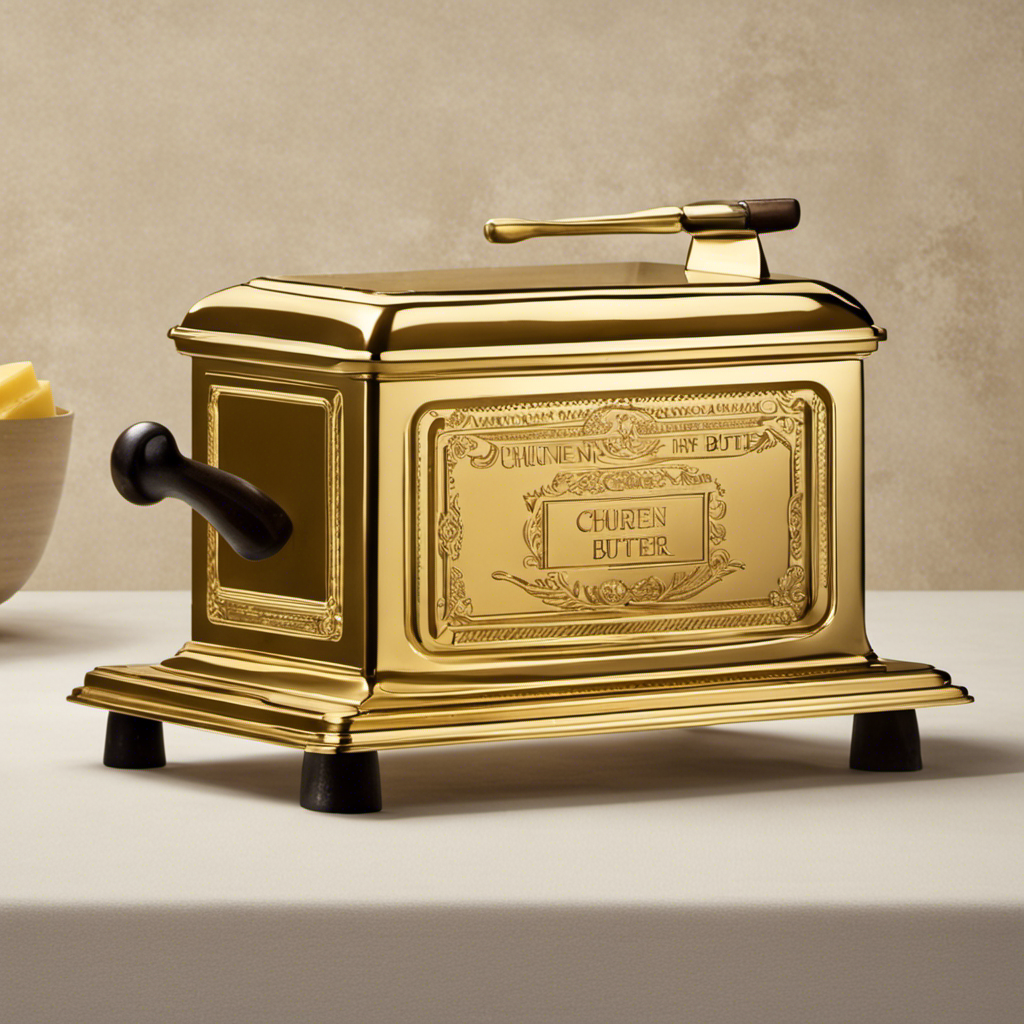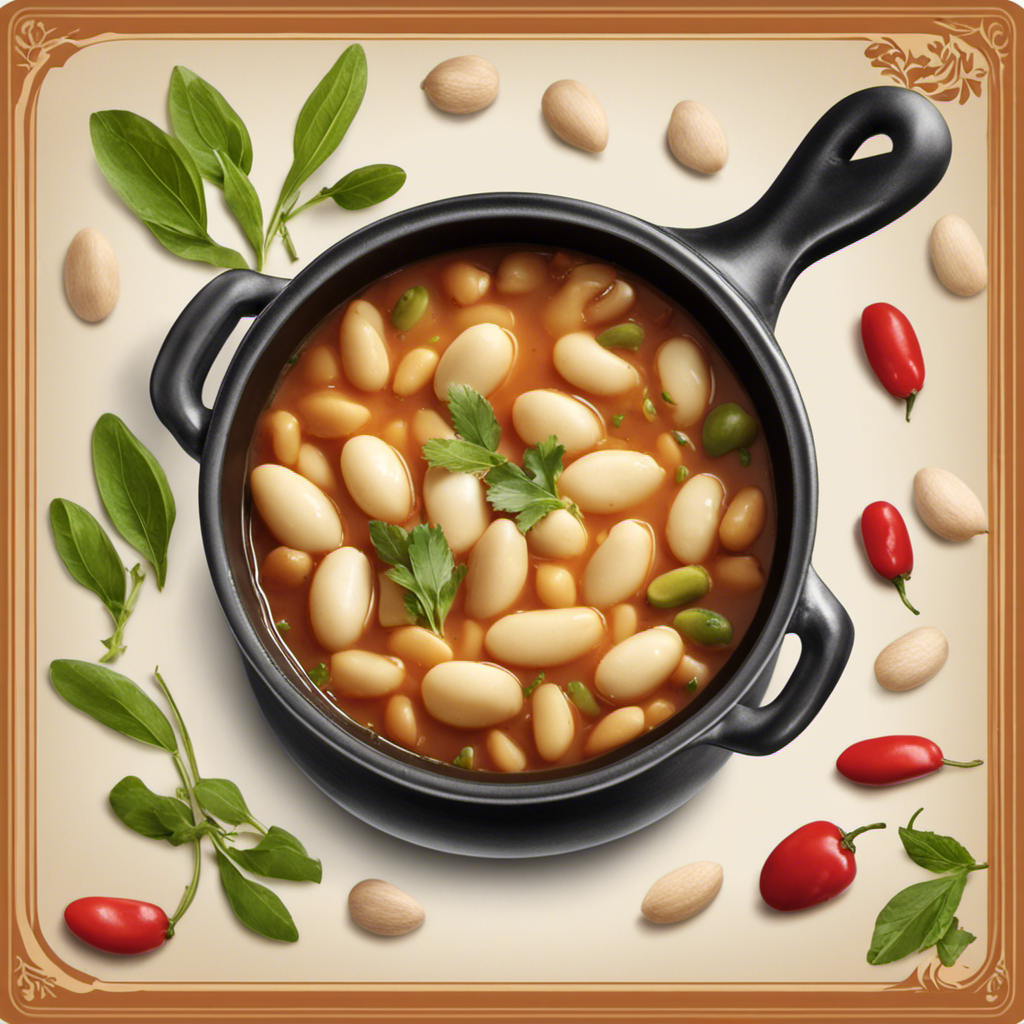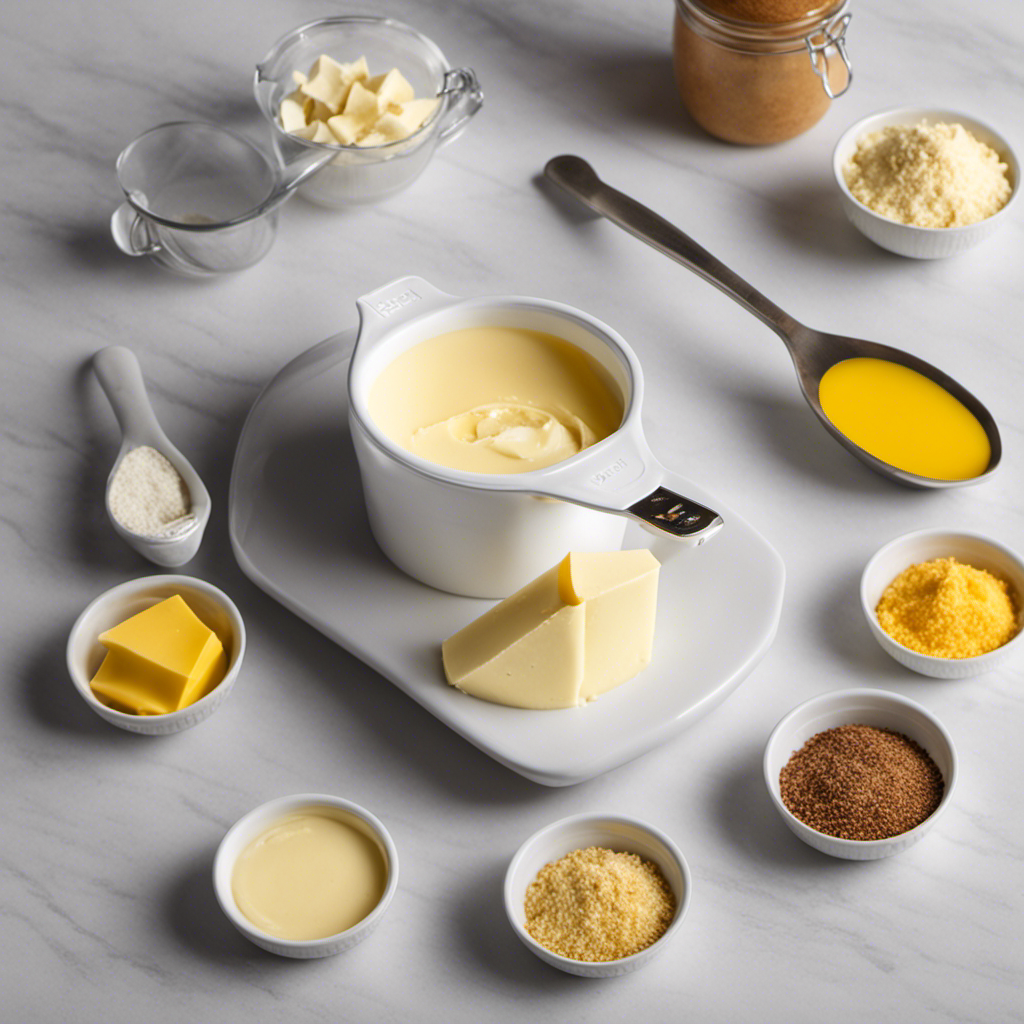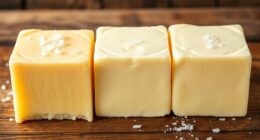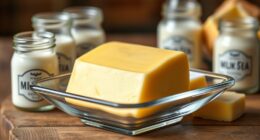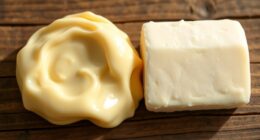Are you prepared to create a tasty dish but puzzled about converting 2 oz of butter into tablespoons? Search no more!
In this article, we will guide you through the conversion process and provide you with the precise measurement you need. By understanding the ratio of butter to tablespoons and using a measuring cup for accuracy, you’ll be able to confidently add the perfect amount of butter to your culinary creations.
So let’s dive in and uncover the secret to measuring butter like a pro!
Key Takeaways
- 2 oz of butter is equivalent to 4 tablespoons.
- Converting grams to tablespoons requires an accurate measurement of the butter.
- Using a kitchen scale is the most precise way to measure butter in grams.
- The conversion may vary depending on the density of the butter.
Understanding the Conversion
To understand the conversion, you’ll need to know that 2 oz of butter is equivalent to 4 tablespoons. When it comes to converting grams to tablespoons, it’s important to have an accurate measurement of the butter. Using a kitchen scale is the most precise way to measure butter in grams. Once you have the weight in grams, you can convert it to tablespoons. Keep in mind that the conversion may vary depending on the density of the butter. It’s always a good idea to consult a conversion chart for specific measurements.
Now that you understand how to convert grams to tablespoons, let’s move on to the next section, which focuses on converting ounces to tablespoons.
Converting Ounces to Tablespoons
You can convert 2 oz of butter into tablespoons by multiplying it by the conversion factor. To understand the conversion, it is important to know that 1 oz is equal to 2 tablespoons. So, by multiplying 2 oz by 2 tablespoons per oz, you get 4 tablespoons. This means that 2 oz of butter is equivalent to 4 tablespoons.
When measuring butter, it is advisable to use a measuring cup for accuracy. A measuring cup specifically designed for liquids can also be used for measuring butter. Make sure to level off the butter in the cup to get an accurate measurement.
It is important to note that different brands of butter may have slightly different densities, so the conversion factor may vary slightly. However, for most standard brands, the conversion factor of 2 tablespoons per ounce remains consistent.
The Ratio of Butter to Tablespoons
When it comes to cooking and baking, accurate conversions of ingredients are crucial for achieving consistent and delicious results. In the case of tablespoons, it’s important to note that conversion accuracy can vary depending on the ingredient being measured.
Additionally, maintaining consistency in butter ratios is essential for ensuring the desired texture and flavor in various recipes.
Understanding these key points will help you navigate your way through the world of measurements and create culinary masterpieces with precision.
Conversion Accuracy of Tablespoons
The accuracy of converting tablespoons to ounces can vary. When it comes to converting between different units of measurement, there are always challenges. It’s important to be aware of these challenges to ensure accurate measurements in your recipes. To help you navigate these conversions, here is a table that shows the approximate conversion from tablespoons to ounces:
| Tablespoons (tbsp) | Ounces (oz) |
|---|---|
| 1 | 0.5 |
| 2 | 1 |
| 3 | 1.5 |
| 4 | 2 |
| 5 | 2.5 |
It’s important to note that these conversions are approximate and can vary slightly depending on the density of the ingredient being measured. To ensure the most accurate results, it’s recommended to use a kitchen scale for precise measurements.
Consistency of Butter Ratios
To maintain consistent ratios, it’s important to be mindful of the density of the butter when measuring it for recipes. Consistency challenges can arise when using varying densities of butter, leading to unexpected results in your dishes. To ensure accuracy, using a food scale is highly recommended.
Here are three emotional reasons why you should consider using a food scale:
- Precision: By using a food scale, you can measure the exact amount of butter required for your recipe, eliminating any guesswork and ensuring consistent results.
- Confidence: Knowing that you are using the correct amount of butter gives you the confidence to tackle any recipe with ease, knowing that your measurements are accurate.
- Perfection: Achieving the perfect balance of flavors and textures in your dishes is easier when you have precise measurements, allowing you to create culinary masterpieces.
By using a food scale, you can overcome the consistency challenges associated with measuring butter, ensuring your recipes turn out just the way you want them to.
Now, let’s explore another method for measuring butter accurately: using a measuring cup.
Using a Measuring Cup for Accuracy
Make sure you’re using a measuring cup to accurately measure the amount of butter you need. Measuring butter accurately is crucial in baking and cooking to ensure the right balance of flavors and textures.
When converting butter measurements, it’s important to remember that 1 stick of butter is equal to 8 tablespoons or 1/2 cup. Therefore, if a recipe calls for 2 ounces of butter, you can easily convert it to tablespoons by knowing that 1 ounce is equal to 2 tablespoons. So, 2 ounces of butter would be equivalent to 4 tablespoons.
Using a measuring cup eliminates any guesswork and guarantees that you’re adding the correct amount of butter to your recipe.
Now, let’s explore other common butter measurements in the next section.
Other Common Butter Measurements
When it comes to working with butter in the kitchen, it’s important to have a good understanding of butter conversion equivalents, common butter portion sizes, and butter measurement shortcuts.
Knowing how to convert between grams, ounces, tablespoons, and cups can help you accurately measure and use butter in your recipes.
Understanding common portion sizes, such as a stick of butter or a tablespoon of butter, can also make it easier to estimate and measure the right amount of butter needed in a recipe.
Additionally, learning some measurement shortcuts, like using the markings on a butter wrapper or using the water displacement method, can save you time and make butter measurement a breeze.
Butter Conversion Equivalents
Did you know that 2 oz of butter is equivalent to approximately 4 tablespoons? Understanding butter consistency and measuring butter accurately is crucial in cooking and baking. Here are some key points to consider:
- Consistency matters: Softened butter is easier to measure accurately than cold or melted butter.
- Use a measuring spoon: A tablespoon is a standard unit of measurement, ensuring precise amounts of butter.
- Pack it in: When measuring solid butter, press it firmly into the measuring spoon to get an accurate measurement.
These tips will help you achieve the perfect amount of butter in your recipes.
Now, let’s move on to exploring common butter portion sizes.
Common Butter Portion Sizes
Now that you have a better understanding of butter conversion equivalents, let’s take a closer look at common butter portion sizes. This will help you determine how many tablespoons are in a specific amount of butter, such as 2 oz. To make it easier for you to visualize, let’s use a table to compare grams and tablespoons for different butter amounts:
| Butter Amount | Grams | Tablespoons |
|---|---|---|
| 1 oz | 28g | 2 tbsp |
| 2 oz | 57g | 4 tbsp |
| 4 oz | 113g | 8 tbsp |
| 8 oz | 227g | 16 tbsp |
Converting butter grams to tablespoons can be a handy skill in the kitchen. With this table, you can easily determine the equivalent measurements for different amounts of butter. So, when you come across a recipe that calls for 2 oz of butter, you now know that it is equivalent to 4 tablespoons. Happy cooking!
Butter Measurement Shortcuts
To make measuring butter easier, you can use shortcuts like eyeballing or using common kitchen utensils. These shortcut methods can save you time and effort when you need a quick conversion.
Here are some emotional responses that these shortcuts can evoke:
-
Convenience: These methods allow you to quickly measure butter without the need for a scale or specific measuring tools.
-
Confidence: By using these shortcuts, you can feel more confident in your ability to accurately measure butter without relying solely on a precise measurement.
-
Efficiency: With these shortcut methods, you can streamline your cooking process and avoid the hassle of searching for the right measuring tools.
Tips and Tricks for Measuring Butter
There’s a handy trick for measuring butter – 2 oz is equivalent to 4 tablespoons.
When it comes to measuring butter, using a scale is the most accurate method. Simply place your container on the scale, press the tare button to zero it out, and then add the desired amount of butter until you reach 2 oz. This ensures that you have the exact measurement required for your recipe.
If you don’t have a scale, you can still measure butter using tablespoons. 2 oz is equal to 4 tablespoons, so you can use this conversion as a guide. Keep in mind that different brands of butter may have slightly different weights, so it’s always a good idea to check the packaging for the weight per tablespoon.
If you’re looking to substitute butter, there are various options available such as margarine, coconut oil, or applesauce. Each substitute has its own unique properties, so it’s important to choose the one that best suits your needs and the recipe you’re making.
Conclusion
In conclusion, converting ounces to tablespoons is a simple and precise process when it comes to measuring butter. By understanding the conversion ratio and using a measuring cup for accuracy, you can easily determine how many tablespoons are in 2 ounces of butter.
Remember, there are also other common measurements for butter, so it’s important to familiarize yourself with these as well.
With these tips and tricks, you’ll become a butter-measuring expert in no time!




